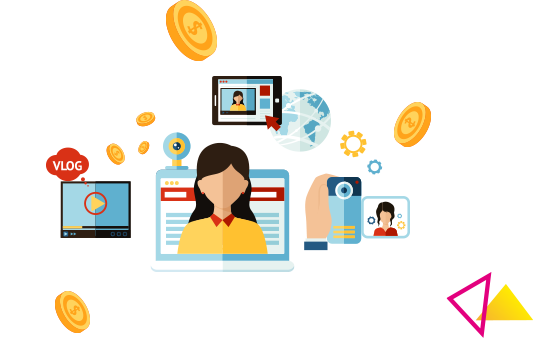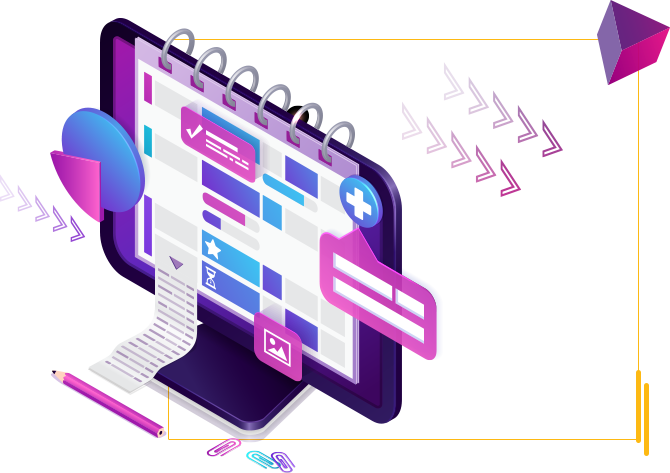
Breaking the Time Barrier: Streamlining Web Development


Having a website is essential for any business or individual looking to establish an online presence.
However, one common question that arises during the development process is: How long does it take to develop a website? The answer to this question can vary significantly depending on various factors, such as the project’s complexity, the availability of resources, and the level of customization required.
This article will delve into these factors and provide insights into the time frame typically involved in developing a website. Understanding these timelines can help you plan and manage your website development project effectively, whether you are an aspiring entrepreneur or a seasoned web developer.
So, let’s dive in and explore just how long it takes to develop a website.
Who Are We?
We cater to all your business needs from digital
marketing to website development!

What is Website Development?
Website development refers to the process of creating and building a website from scratch or making modifications to an existing one. It combines technical skills, design expertise, and content integration to develop a website meeting the desired objectives and user expectations.

The Importance of Website Development
In the digital age, websites serve as virtual storefronts for businesses, making website development a critical aspect of any successful company. With more and more consumers relying on the internet for purchasing, having a well-designed and functional website is essential to attract and retain customers.
A professionally developed website enhances brand credibility and plays a crucial role in establishing trust with potential clients.
Firstly, an aesthetically pleasing website layout can significantly impact a user’s first impression of a business. Studies have shown that users form opinions about a website within seconds of visiting it.
Therefore, having an attractive design that aligns with your brand identity is key to immediately capturing visitors’ attention and encouraging them to explore further.
Additionally, easy navigation and clear calls-to-action are vital in guiding users through the site effortlessly and compelling them to take desired actions such as making purchases or submitting forms.
Grow Human-Centered
Businesses
Online
Web App Vault is a custom web design and business
website development company that enhances the visibility
and credibility of businesses. We are an approachable
eCommerce service provider that fuels digital marketing.
We Are Here To Help
Key Elements of Website Development
Design and development of websites encompass various elements, including web design, front-end development, back-end development, content creation, and website optimization. These elements work together to ensure the website’s functionality, user-friendliness, and visual appeal.
Web App Vault – Your
Industry-Specific
Data Guardian
Our industry-specific web application solution
provides robust data security and a seamless user
experience tailored to your industry’s requirements.
Safeguard your sensitive data with assurance.

Providing Animation Services To
Clients In Multiple Cities Across USA & Canada
- Arlington
- Cleveland
- Jacksonville
- Miami
- Orlando
- Atlanta
- Dallas
- Louisville
- Minneapolis
- Philadelphia
- Austin
- Denver
- Kansas City
- New York
- Portland
- Chicago
- Houston
- Los Angeles
- New Orleans
- San Diego
The Website Development Process
The website development process involves several stages that ensure a systematic approach to building a website. Each stage contributes to the overall development timeline and requires specific expertise and collaboration between different team members.
Planning and Strategy
The planning and strategy phase lays the foundation for the website development process. It involves defining goals, identifying target audiences, conducting market research, and creating a project roadmap. This phase also outlines the website’s structure, features, and functionality.

Designing the Website
Website design focuses on creating an aesthetically pleasing and user-friendly interface. It involves wireframing, creating visual mock-ups, and selecting color schemes, typography, and graphics. Designers collaborate with clients to ensure the website’s visual elements align with the brand identity and user experience objectives.
Development and Coding
The development and coding phase transforms the design into a fully functional website. Front-end developers use HTML, CSS, and JavaScript to build the user interface and implement design elements. Back-end developers handle server-side programming, database integration, and other technical aspects that make the website dynamic and interactive.
Content Creation and Integration
Content creation and integration are vital in engaging website visitors and conveying information effectively. This phase involves writing and optimizing website content, integrating multimedia elements, and ensuring seamless navigation. Content management systems (CMS) are often used to facilitate content creation and updates.
Testing and Quality Assurance
Testing and quality assurance are crucial to ensure the website functions correctly across different devices and browsers. This phase involves conducting compatibility tests, checking for responsive design, validating code, and identifying and fixing any bugs or errors. User testing may also be conducted to gather feedback and improve the overall user experience.
Launching the Website
Once the website has undergone thorough testing and quality assurance, it is ready for launch. This phase involves transferring the website to a live server, configuring domain settings, and implementing analytics tools to monitor website performance. Post-launch activities may include search engine optimization (SEO), marketing campaigns, and ongoing maintenance.
Factors Affecting Website Development Time:
The time required to develop a website can vary significantly depending on several factors. Understanding these factors can help stakeholders set realistic expectations and plan their website development projects effectively.
The Complexity of the Website
The complexity of the website plays a significant role in determining the development time. Simple brochure websites with basic features can be developed relatively quickly. At the same time, complex e-commerce platforms or custom web applications may require more time due to their intricate functionalities and integrations.
Customization and Functionality
Websites that require extensive customization and advanced functionality may take longer to develop. Custom designs, intricate animations, complex databases, and third-party integrations increase development time. It is essential to carefully consider and balance the required features with the project timeline.
Availability of Resources
The availability of resources, including human resources and technical infrastructure, affects the development time. Projects with limited resources or competing priorities may experience delays. Adequate planning and resource allocation can help streamline the development process and ensure timely completion.
Collaboration and Communication
Effective collaboration and communication between stakeholders, including clients, designers, developers, and content creators, are crucial for timely website development. Clear communication channels, regular project updates, and efficient feedback loops can help minimize delays and ensure smooth progress.
Typical Timeframes for Website Development
While the development time for each website varies, certain types of websites can be categorized based on their complexity and provide general timeframes for reference.
Simple Brochure Website
A simple brochure website with a few pages, basic design elements, and minimal functionality can typically be developed within a few weeks. This type of website is suitable for small businesses or individuals looking to establish an online presence and provide basic information to visitors.
Small Business Website
Small business websites, which often include additional features such as contact forms, image galleries, and blog sections, usually require several weeks to a few months for development. These websites aim to showcase products or services, attract customers, and facilitate lead generation.
E-Commerce Website
E-commerce websites with online shopping functionality, product catalogs, payment gateways, and inventory management systems generally require several months to develop. The complexity involved in building secure and scalable e-commerce platforms contributes to the extended development timeline.
Custom Web Application
Custom web applications tailored to specific business needs, such as customer relationship management (CRM) systems, project management tools, or online marketplaces, can take several months to a year to develop. These applications often require intricate coding, complex databases, and extensive testing to ensure optimal performance.
Best Practices for Efficient Website Development
To ensure efficient website development and timely project completion, it is essential to follow industry best practices. Consider the following guidelines:
Define Clear Goals and Objectives
Clearly define the goals and objectives of the website development project. This will help streamline decision-making, allocate resources effectively, and maintain focus throughout the development cycle.
Plan and Document the Project
Thorough planning and documentation are crucial for successful website development. Create a detailed project plan, including milestones, timelines, and deliverables: document technical specifications, design guidelines, and functional requirements to clarify and avoid misunderstandings.
Collaborate with Designers and Developers
Collaboration between designers and developers is essential for seamless website development. Foster open communication channels, encourage feedback, and promote a collaborative work environment. Regular meetings and progress updates can help identify and resolve any issues promptly.
Optimize Content and Images
Optimizing website content and images is essential for improving loading times and overall performance. Compress images, minify code, and implement caching techniques to ensure a smooth user experience. Additionally, optimize content for search engines by incorporating relevant keywords and meta tags.
Test Continuously and Optimize Performance
Continuous testing is crucial to identify and fix bugs or errors throughout development. Perform usability tests, conduct cross-browser and cross-device compatibility checks, and ensure responsive design on various screen sizes. Regularly optimize website performance by monitoring loading times and implementing performance-enhancing techniques.
WRAPPING UP
The time it takes to develop a website can vary greatly depending on complexity, features, and team size. Simple websites with basic functionalities can be produced in days or weeks, while more complex projects may take several months or even years.
Therefore, it is essential for businesses and individuals to carefully plan and define their website requirements before starting the development process. By doing so, they can better manage expectations and ensure their website is completed within a reasonable timeframe.
Patience and effective communication with the development team are key to achieving a successful website launch. So, start planning today and prepare to bring your online presence to life!
